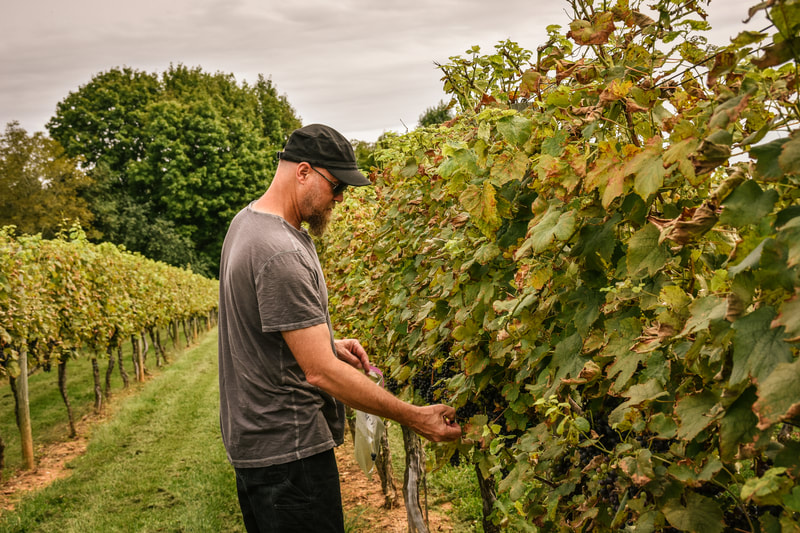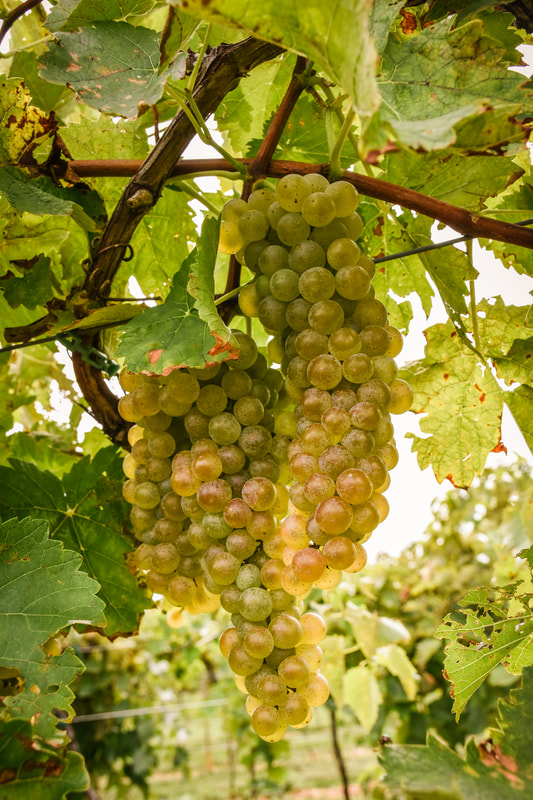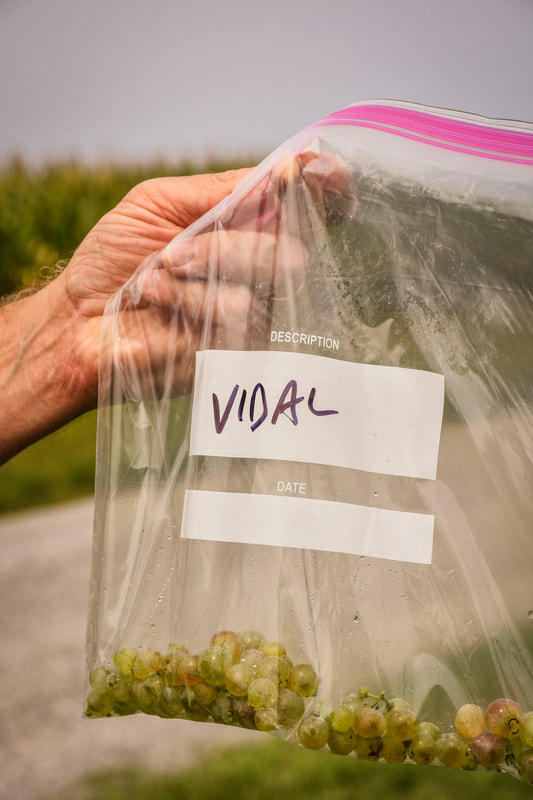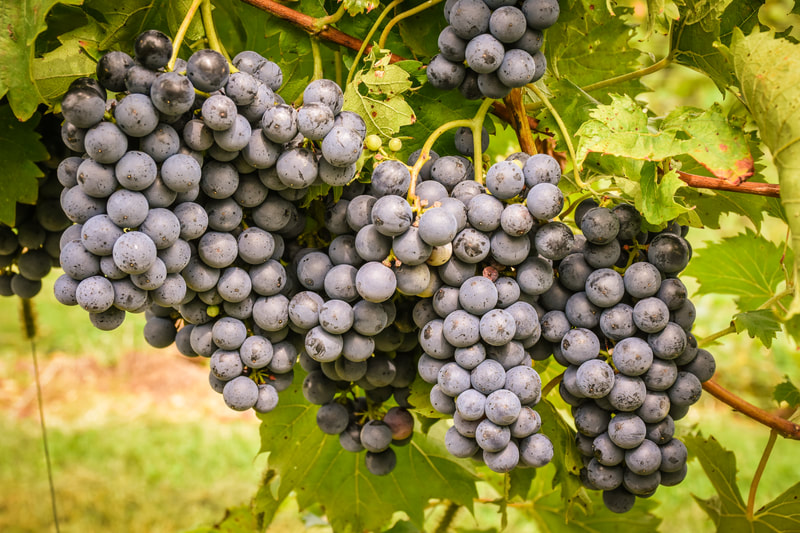|
Today I joined Carl on a trip over to the Stewartstown vineyards. He wanted to get grape samples to test for sugar levels, and I wanted to travel. Yep--even a destination 20 minutes away is a treat some days! The three varieties from which he got samples are: -Petit Verdot: This classic red Bordeaux vinifera has become one of Carl's favorites in recent years. Between our two vineyard locations, we have over an acre and a half of PV vines; the vines at The Brogue were planted in 2015. Some of the reasons that Carl is a fan of this grape are its consistency and hardiness. He cites as a rather heartbreaking contrast what happened over the 2018/19 winter to our estate vines of Merlot, another favorite Bordeaux variety (He used to call himself a "Merlot fanatic."). A wet late 2018 growing season meant that the Merlot grapes went into the winter with "wet feet," so when a cold snap hit in the early winter of 2018, the vines started cracking and sustained freeze damage. Coupled with another cold snap in early 2019 which claimed some of the early buds, this situation meant incredible losses to both vines (a third of our total Merlot acreage) and yields. From the 2019 Merlot harvest only two barrels of wine resulted, rather than the usual yields of eight barrels or more. What damage did the Petit Verdot sustain that same winter? Virtually none. It has survived both freezes and frosts like a champion. The main challenge with Petit Verdot, both here and in definitely in Bordeaux, is getting the grapes to fully ripen before harvest. Its name ("little green one") gives a clue about its often-green character. In France, the Petit Verdot becomes fully ripe perhaps only one or two years out of ten. Here, we're able to choose the right clones and locations to get it ripe much more often. In our cellar, Petit Verdot has real potential as a serious grape, providing structure and backbone to Cadenza reds, including our 2017 Cadenza Vineyards Cadenza, of which it comprises 41%. The Petit Verdot from last year's harvest was considered the best red of the year. While the grape color is looking good right now, tasting them is quite an adventure in tartness. At both vineyard sites, the Petit Verdot grapes have quite a ways to go before they'll be ripe and developed enough to pick. If the Stewartstown PV needs to be picked early, Carl says it'll likely be put into a rosé. -Vidal Blanc: This hybrid white winter-hardy grape grows on high trellis wires in the Stewartstown vineyard. It's a variety originally developed for French Cognac and now particularly enjoyed in cool climates such as Ontario and New York's Finger Lakes. Compared to the PV, these grapes seem huge. I love the way they glow golden. They are getting close to ripeness (currently measuring 17 Brix out of an ideal 21 or 22) and will likely be picked in about two weeks. They will become part of our varietal Vidal Blanc wine. -Chambourcin: This red hybrid grape was a real favorite of Dick Naylor's, whose vineyard property this used to be. Chambourcin is a versatile variety which has been produced for about six decades. The grape variety is a bit unusual because it is a tenteurier, which means that the juice inside the grapes is colored pink. (Usually the juice for all other grape varieties, including red grapes, is clear or golden. Red wines get their color from skin contact during fermentation.) It, like Vidal, is a pretty "bullet-proof" grape in the vineyard, hardly and predictable.
Chambourcin can be used in a variety of wine styles, from deeper dry red to juicy dry rosé. Carl's planning to pick some of it pretty soon--within two weeks--for use in our Prelude, where the color from the juice will really shine. More Chambourcin will be picked later, destined for a red blend or possibly our ruby-style port, Forté. Today these grapes tasted quite nice! Their day is coming... So, as smog from the west coast wildfires coats our sky white and potential hurricanes swirl in waters to the south, the grapes keep plugging along. At this time, we're grateful for every drop of sunlight which will continue the process of making the 2020 harvest just a little sweeter.
0 Comments
Leave a Reply. |
Archives
July 2021
Categories |









 RSS Feed
RSS Feed